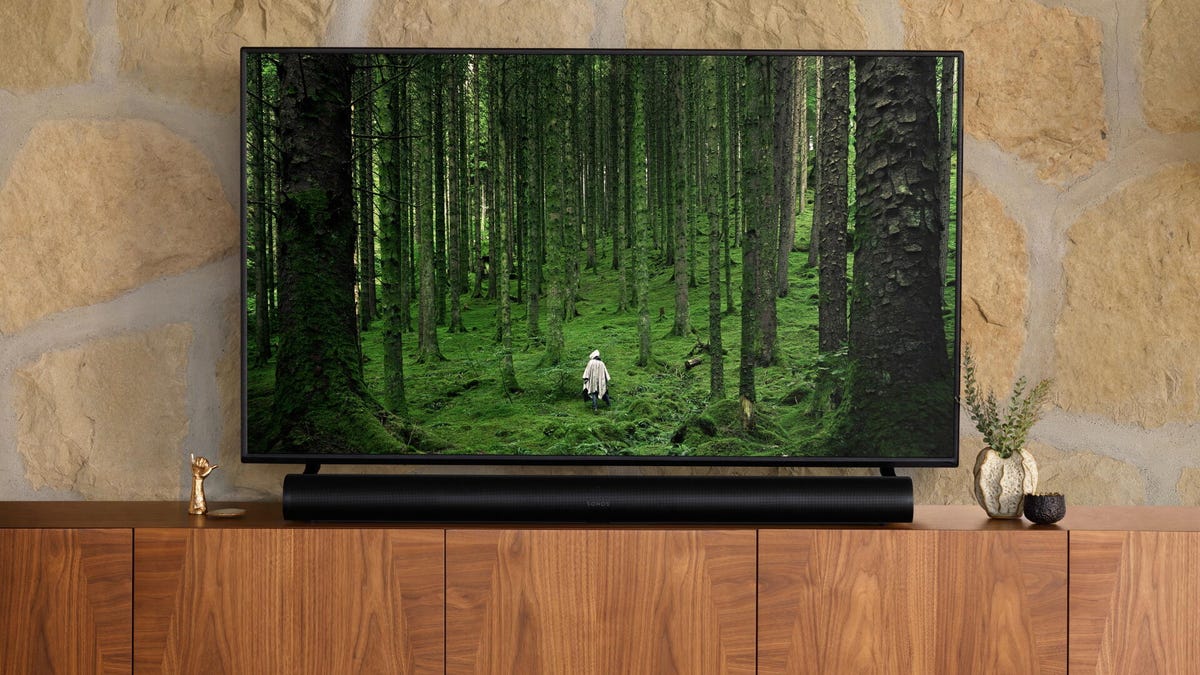Is Sonos Arc the Dolby Atmos soundbar you've been waiting for?
The $800 speaker is a sleek-looking Playbar replacement, but only owners of newer televisions will be able to use its Atmos feature.

Goodbye, Playbase , we hardly knew ye. Farewell too, beloved yet ancient Playbar. In one fell swoop, Sonos has replaced both speakers with the new Arc soundbar , shipping in June for $800 ($1399 AUD). Sure you can get a good soundbar for way less, but Sonos fans skew higher-end and the new Arc is aimed squarely at those for whom the Sonos Beam is just not enough.
The long-anticipated Playbar replacement is bigger than the Beam and touts an impressive speaker array as well as Amazon Alexa or Google Assistant voice assistant built in (your choice), but its headline feature is support for the fancy Dolby Atmos surround format. Unfortunately, Atmos on the Arc requires a relatively new TV; see below for details.
The sleek, rounded Arc comes in a choice of either black or white and features a total of eight elliptical woofers, including upfiring drivers, and three "precisely angled" silk-dome tweeters. Sonos doesn't include specs about the Arc's frequency response but it will be interesting to hear how much bass the unit can produce, especially as the smaller Beam is so bass-shy. If not, then the company is offering a new $699 ($999 AUD) Sonos Sub replacement with updated guts as well. Oh, and there's a new Sonos Five, too (no voice assistant on that though).
Read more: Best Sonos speakers starting at $100
The Arc also has an array of four far-field microphones which should help the unit hear you shout "Alexa!" or "OK Google!!!" even when your music is blaring.
Like other Sonos products there is no Bluetooth streaming on the Arc. Instead it uses Wi-Fi (or Ethernet) to stream from dozens of different services via the app or through voice, and the Sonos operating system enables whole-house music and voice control, too. The system is now being upgraded to version S2, which controversially dispenses with legacy devices, and enables the Arc to use hi-res audio (i.e. Dolby Atmos).
Just one HDMI means limited Atmos
Sonos Arc is not just a description of its rounded design -- a huge improvement on the boxy Playbar -- but also an obscure reference to the way it connects to your devices. The Arc uses a technology called HDMI ARC and its successor eARC to get audio from your television, and that's where things get tricky.
There's only one HDMI port on the Arc, so the soundbar's Dolby Atmos support depends on the capabilities of your TV. Atmos audio can take one of two forms: Dolby TrueHD (typically available via a 4K Blu-ray player) and Dolby Digital Plus (streaming via a Apple TV 4K, Amazon Fire TV Stick 4K or Nvidia Shield). In order to reproduce TrueHD Atmos feeds from 4K Blu-ray, your TV needs to support the newer eARC protocol or have native Dolby Atmos decoding. Only a handful of 2019 and 2020 LG and Sony TVs qualify, as do some 2020 Samsung models.
If your TV was made after 2016 it might be possible to hear Dolby Digital Plus feeds (which can include Atmos) from streaming services using an external device. There's a lot of variables to worry about, however -- Dolby's site has details.
The Arc can also get Atmos from the apps built into your TV. Again, that requires a relatively recent TV as well as Atmos support on the specific TV app you're using, such as Netflix, Disney Plus or Amazon Prime video. Atmos streaming support varies widely -- Apple's TV app, for example, only supports it on the Apple TV 4K, not on smart TVs.
Bottom line: If you don't have a compatible television, the Arc won't do Atmos.
Other Atmos soundbars such as the Vizio SB36512-f6 get around the problem by offering at least two HDMI ports -- one input which you can connect to a Blu-ray player or streaming box and a second to the TV using HDMI ARC. I understand that Sonos has always been about simplicity, but I do anticipate a lot of people are going to be disappointed when they can't get Atmos because they don't have the right TV.
Note that if you don't have HDMI at all, the speaker also includes an optical-to-HDMI adapter for Dolby Digital decoding.
Until I can get my hands on a unit, it's hard to say how I feel about it. At first I was excited by the inclusion of Dolby Atmos but then the caveats kind of bummed me out. The Arc's nicer looks and built-in voice assistant could be enough to convince Sonos fans to upgrade over the Playbar or Playbase, but it's also $100 more expensive. If you're concerned about Atmos and don't have a new TV, the aforementioned Vizio soundbar is much cheaper and includes a subwoofer.
The Sonos Arc will be available on June 10, so look out for a full CNET review then.

